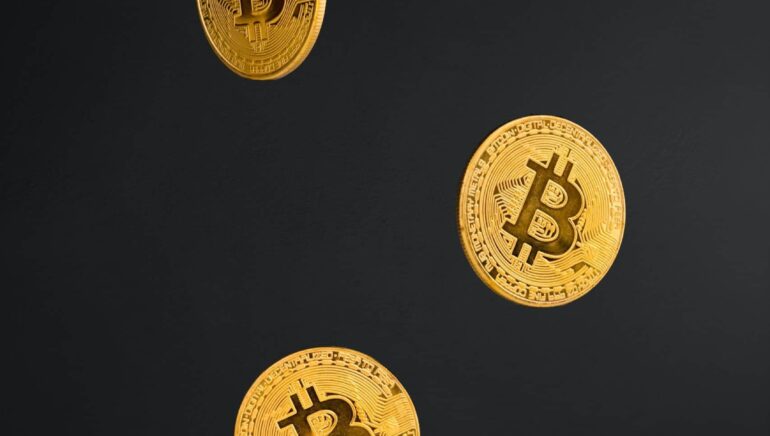A look at coinmarketcap.com confirms that most cryptocurrencies have incurred massive losses in recent days. Bitcoin has shed 30.4% in the past week alone (as of 12 May 2022), Ether 36.6%, and some of the other altcoins more than 50%. On the top ten list, only the stable coins Tether, USD Coin, and Binance USD have been stable.
Bitcoin in USD (05/2012 – 05/2022 – logarithmised)

Bitcoin in USD (05/2012 – 05/2022 – absolute)


Sources: Trading View, as of 12 May 2022
Risk-off phase on the exchanges and a problem with the stable coin UST (Terra) as causes
The losses of recent days extended the trend that had been in place for half a year. Bitcoin has shed about 60% of its value since its high in November. The performance of Bitcoin follows a 4Y cycle that is based on the halving of the miner rewards. Shortly after a halving, a 1.5-year upward trend would typically start. The most recent halving happened in April 2020. The initial 1.5 years are then followed by larger losses (2022 seems to be such a year on the basis of this rhythm), followed by a slightly positive year.
Also, we are currently in a risk-off phase that was triggered by rising inflation, the war in Ukraine, and interest rates. For example, the growth values on the Nasdaq have lost more than 25% in the year to date.
Stable Coin UST (Terra) also responsible for the crypto crash
In addition to the aforementioned negative factors, another problem with the stable coin UST (Terra) that emerged on 7 May has contributed to the crash. UST (Terra) is a so-called algorithmic stable coin, i.e. it is neither covered by fiat currencies or bonds (e.g. Tether) nor by crypto currencies (e.g. DAI). The way UST works in theory is that a balance (i.e. UST = USD) is maintained by arbitrage transactions. For example, if the price of UST is above USD 1, Luna tokens are “burnt” (i.e. destroyed) and UST is bought at USD 1. This results in an arbitrage profit. As a result of these transactions, the volume of UST increases until an equilibrium has been reached. If the price of UST is below USD 1, market participants can swap UST for (newly created) Luna tokens at USD 1. This works as long as the price of Luna is (halfway) stable. And that is where the problems started. From 7 May onwards, so-called crypto whales were jointly selling about UST 285mn while short-selling Luna, as a result of which the USD peg started to crumble. This, then, set off panic-selling in UST, and the USD peg has not been re-established yet as the price of Luna imploded from USD 86 to below USD 0.1.

Chart 1: UST stable coin; source: Trade View; as of 12 May 2022
At the time of going to press, the exchange rate of UST to USD is at 0.48 instead of the theoretical 1. At its lowest, it was at 0.25.

Chart 2: Luna price; source: Trade View; data as of 12 May 2022
The Luna Foundation Guard (LFG), i.e. the organisation behind the Terra-Luna system (an NGO), has announced to make every effort to re-establish stability. Shortly before the crash, the organisation released a statement that it had bought Bitcoin worth USD 1.5bn and it was then holding a total of more than USD 3bn in Bitcoin. These holdings are now to be used to save UST. Some are worried that these measures could in fact exert selling pressure on Bitcoin. Other coins are affected as well, for example Avalanche. Once the downward trend has started, it often tends to gain momentum because investors start panicking or stop/loss orders are being triggered. The panic is often exacerbated by news reports such as the one about Binance (N.B. one of the largest crypto exchanges), which said it did not want to allow any further withdrawals of Luna and UST. Binance justified the step with a capacity overload caused by the transaction volume. The exchange said it would retract the measures once the situation had calmed down.
Whether the “anything but stable coin” Terra will survive is unclear
In summary, we do not want to venture a prognosis on whether Terra will survive this attack. Terra would certainly not be the first algorithmic “stable” coin to fail. It would be one in a line behind Empty Set Dollar or Basis Cash that suffered the same fate. What does make Terra special though is its size. Behind Ethereum, Terra was at times the second-largest blockchain in the so-called decentralised financial world with a total value locked (i.e. value of coins staked/locked) of USD 40bn at its peak.
A massive loss of trust and increased uncertainty are currently burdening the crypto world
If Terra were to fail, this could be the end of algorithmic stable coins. Demand for stable coins will remain high, but investors will prefer credible projects that offer a transparent form of cover in fiat or crypto. Governments will be pushing their regulation agenda even more after this fiasco. In Europe, stable coins will be regulated under the MiCA Directive (N.B. on the regulation of crypto assets).
In addition, the increased level of uncertainty on the capital markets is affecting the sentiment for crypto currencies. The uncertainty factors at play are the high inflation rates and the resulting interest rate hikes, the war in Ukraine, and the resulting, elevated risk of stagflation in the global economy.
For a glossary of technical terms, please visit this link:
Fonds-ABC | Erste Asset Management
Legal note:
Prognoses are no reliable indicator for future performance.

